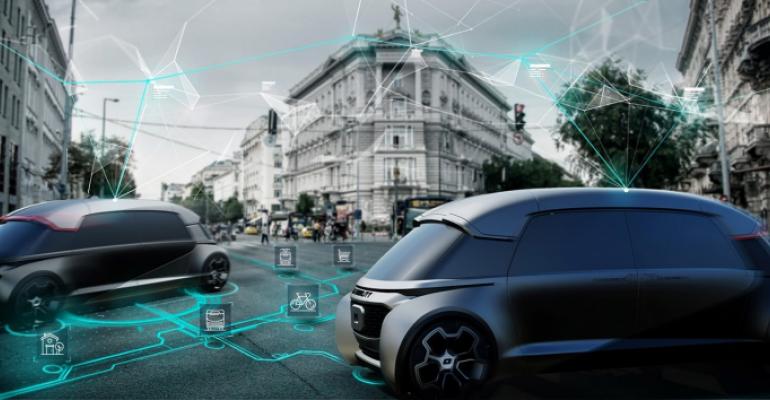A mobility transformation is taking shape across multiple industries. The transformation is a combination of technological, regulatory and societal changes all pushing for greater safety, sustainability and equity in human mobility.
In the automotive industry, this transformation has manifested in the push for vehicle electrification and the continuing development of automated and autonomous vehicle technology.
The idea of a car that can drive completely on its own, with no human input, is obviously compelling. For me personally, automated vehicle technologies have been a part of my career in the automotive industry, beginning with early development work on advanced driver assistance systems, self-parking and other such systems.
As the technology continues to improve, along with the digitalization of development processes, it stands to revolutionize how we interact with vehicles and move about our world.
Autonomy promises to be a foundational change in the automotive and transportation industry. First, AVs will change the nature of automotive products, from essentially mechanical ones to integrated multi-domain technology products.
This is because AVs will rely on a mixture of more traditional mechanical systems (such as braking and steering) in concert with advanced software and electronics to enable sense-think-act functions. For AV manufacturers, this translates to a shift in value, and thus their development priorities, toward the onboard electronics and software.

AVs operating within a mobility system will offer benefits such as safer roads, less congestion and more personal freedom.
As the levels of autonomy approach SAE level 5, the disruption will only grow. Many experts expect that connected, self-driving vehicle technologies will change the way consumers use or access private mobility, tending toward a model of transportation-as-a-service (TaaS).
The fundamental idea behind TaaS is that most consumers will cease to own personal vehicles. Instead, TaaS customers will hail rides as needed from a fleet of vehicles owned and operated by a transportation company. For consumers, this eliminates vehicle maintenance, insurance and fuel costs while also allowing each vehicle to spend more time moving people about their environments.
Ultimately, the realization of a true TaaS system will mean a large societal shift, as well as a dramatic departure from traditional automotive business models. Key benefits include safer roads, less congestion, reduced cost from vehicle ownership and the convenience of automated chauffeurs that can take us from destination to destination.
This last point, for me, is perhaps most exciting of all. AVs and TaaS models should, if done correctly, offer broader access to high quality mobility, enabling more people the freedom of personal transportation.
The question for today, then, is how to continue to advance AV technology to realize the potential described above. Technologically, the largest remaining challenge is the training of autonomous driving algorithms to perceive and interpret the driving environment, with particular emphasis on so-called edge cases.
In addition, the development of a robust system of sensors, actuators and compute devices that can perceive and respond to stimuli in mere fractions of a second will continue to be a challenge for engineers working on AV systems.
As vehicles become more sophisticated, simulation will become a necessary complement to real-world testing. Simulation can help train the decision algorithms that will guide an AV and test the various electromechanical and mechatronic sub-systems much more quickly and efficiently than real-world testing miles.
 Some real-world testing will always be required, especially for certification purposes, but a combined approach will enable AV engineering teams to investigate and account for exceptional on-road scenarios more effectively, thus improving the safety of their AV systems.
Some real-world testing will always be required, especially for certification purposes, but a combined approach will enable AV engineering teams to investigate and account for exceptional on-road scenarios more effectively, thus improving the safety of their AV systems.
Moreover, we believe a new approach to vehicle development is necessary. AV manufacturers must embrace digitalization and break down the boundaries that often exist between engineering domains and the stages of product development and manufacturing.
Key to this approach is a comprehensive digital twin that captures every aspect of the vehicle design and production.
Using such a digital twin, AV manufacturers can connect engineering teams from across the electrical, electronic, software and mechanical domains. This means AV manufacturers will be able to design, verify and validate entire AV platforms, ensuring the highest standards of safety, reliability and passenger comfort.
Nand Kochhar (pictured, above left) is vice president-Automotive and Transportation Industry Strategy for Siemens Digital Industries Software.





